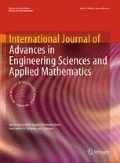Abstract
The human immune system provides rich metaphors for adaptive pattern recognition. Fault detection and diagnosis in chemical processes is commonly formulated as a pattern recognition problem. However, conventional methods for fault diagnosis often do not have a mechanism to adapt and learn as the process changes over time. In this paper, we propose an Artificial Immune System (AIS) framework that endows learning to statistical process monitoring techniques such as Principal component analysis. The proposed AIS framework also provides a direct means to incorporate recovery actions after a failure has been detected and diagnosed. We demonstrate the efficacy of the proposed framework using a simulated binary distillation column case study.














Similar content being viewed by others
References
Venkatasubramanian, V., Rengaswamy, R., Kavuri, S.N.: A review of process fault detection and diagnosis. Part II: Qualitative models and search strategies. Comput. Chem. Eng. 27(313–326), 2003 (2002)
Venkatasubramanian, V., Rengaswamy, R., Kavuri, S.N., Yin, K.: A review of process fault detection and diagnosis. Part III: Process history based methods. Comput. Chem. Eng. 27(293–311), 2003 (2002)
Venkatasubramanian, V., Rengaswamy, R., Yin, K., Kavuri, S.N.: A review of process fault detection and diagnosis. Part I: Quantative model-based methods. Comput. Chem. Eng. 27(293–311), 2003 (2002)
de Castro, L.N., Timmis, J.: Artificial immune systems: a new computational intelligence approach. Springer, New York (2002)
Powers, S.T., He, J.: A hybrid artificial immune system and Self Organising Map for network intrusion detection. Inf. Sci. 178, 3024–3042 (2008)
Paquete, L., Stützle, T.: Design and analysis of stochastic local search for the multiobjective traveling salesman problem. Comput. Oper. Res. 36, 2619–2631 (2009)
Guimarães, F.G., Palhares, R.M., Campelo, F., Igarashi, H.: Design of mixed H2/H∞ control systems using algorithms inspired by the immune system. Inf. Sci. 177, 4368–4386 (2007)
Dasgupta, D., Yu, S., Nino, F.: Recent advances in artificial immune systems: models and applications. Appl. Soft Comput. J. 11, 1574–1587 (2011)
Freitas, A.A., Timmis, J.: Revisiting the foundations of artificial immune systems for data mining. IEEE Trans. Evol. Comput. 11(4), 521–540 (2007)
Laurentys, C.A., Ronacher, G., Palhares, R.M., Caminhas, W.M.: Design of an artificial immune system for fault detection: a negative selection approach. Expert Syst. Appl. 37, 5507–5513 (2010)
Ghosh, K., Srinivasan, R.: Immune-system-inspired approach to process monitoring and fault diagnosis. Ind. Eng. Chem. Res. 50, 1637–1651 (2011)
Cho, J.H., Lee, J.M., Choi, S.W., Lee, D., Lee, I.B.: Fault identification for process monitoring using kernel principal component analysis. Chem. Eng. Sci. 60, 279–288 (2005)
Srinivasan, R., Wang, C., Ho, W.K., Lim, K.W.: Dynamic principal component analysis based methodology for clustering process states in agile chemical plants. Ind. Eng. Chem. Res. 43, 2123–2139 (2004)
Qin, J.S.: Statistical process monitoring: basics and beyond. J. Chemom. 2003(17), 480–502 (2003)
Srinivasan, R., Viswanathan, P., Vedam, H., Nochur, A.: A framework for managing transitions in chemical plants. Comput. Chem. Eng. 29, 305–322 (2005)
Krzanowski, W.J.: Between-groups comparison of principal components. J Am Stat Assoc 74(367), 703–707 (1979)
Diehl, M.: Real-time optimization for large scale nonlinear processes. PhD thesis, University of Heidelberg (2001)
de Castro, L.N., Von Zuben, F.J.: An evolutionary immune network for data clustering. In: Proceedings of the IEEE Brazilian Symposium on Artificial Neural Networks, pp. 84–89 (2000a)
de Castro, L.N., Von Zuben, F.J.: The clonal selection algorithm with engineering applications. In: Proccedings of GECCO’00, pp. 36–37 (2000b)
de Castro, L.N., Timmis, J.I.: Artificial Immune Systems: a novel paradigm to pattern recognition. In: Corchado, J.M., Alonso, L., and Fyfe C. (eds.) Artificial neural networks in pattern recognition, pp. 67–84. SOCO-2002, University of Paisley, Paisley (2002)
Acknowledgments
The authors express their gratitude to Mr. Sathish Natarajan for assistance in the preparation of this manuscript.
Author information
Authors and Affiliations
Corresponding author
Rights and permissions
About this article
Cite this article
Kiang, C.C., Srinivasan, R. An artificial immune system for adaptive fault detection, diagnosis and recovery. Int J Adv Eng Sci Appl Math 4, 22–31 (2012). https://doi.org/10.1007/s12572-012-0054-2
Published:
Issue Date:
DOI: https://doi.org/10.1007/s12572-012-0054-2




